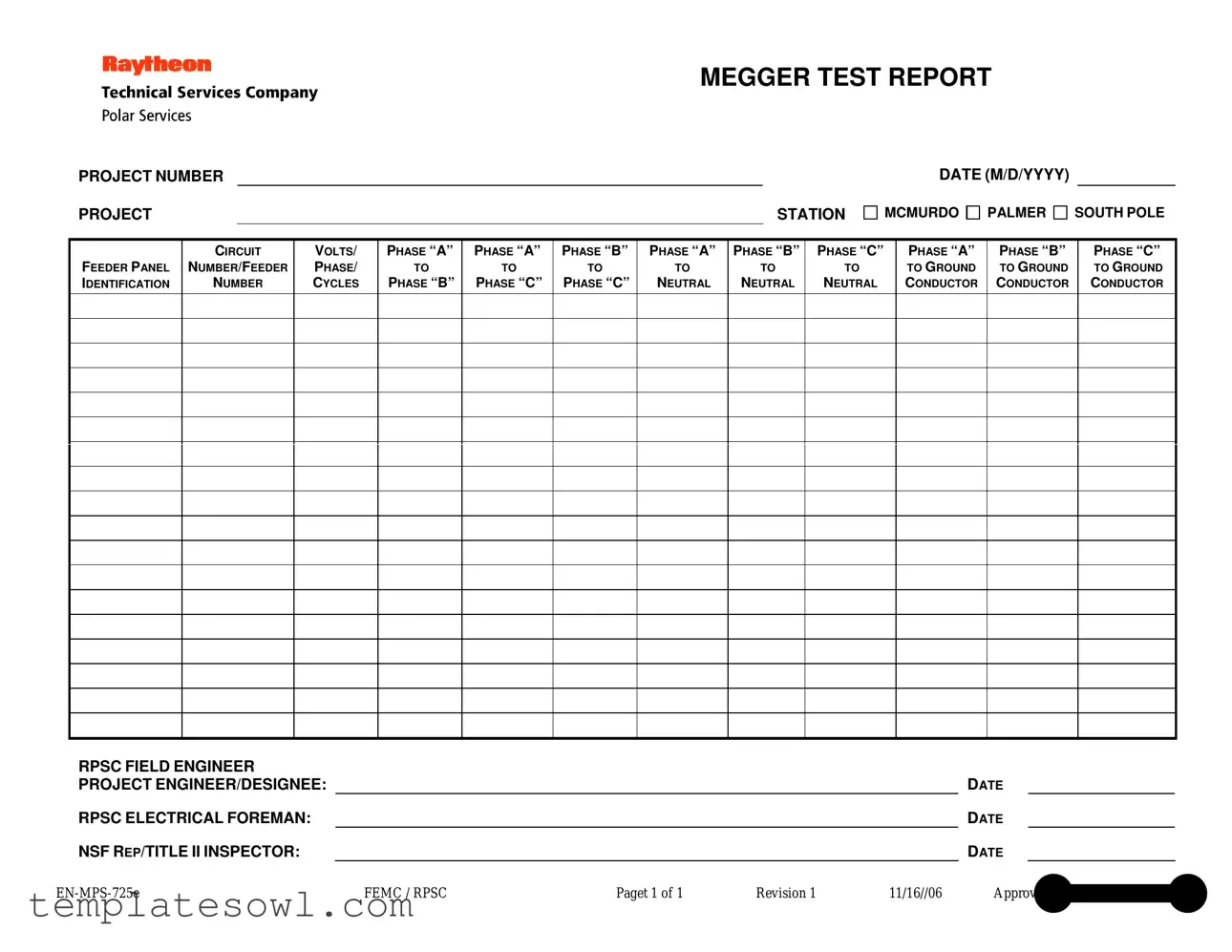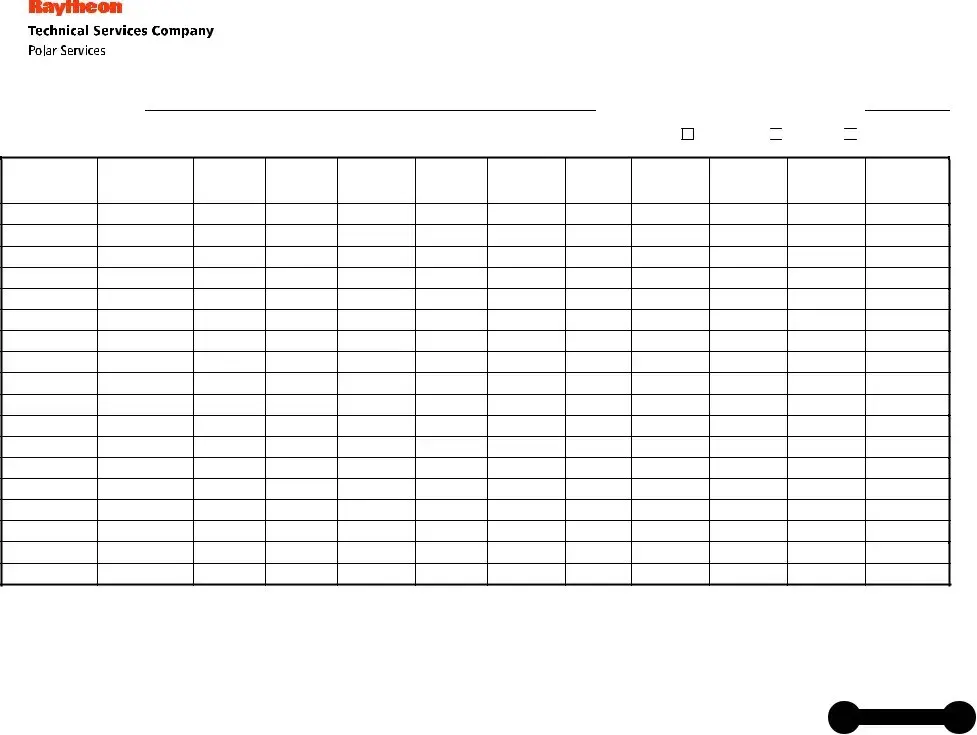What is a Megger Test and why is it important?
A Megger Test, also known as insulation resistance testing, is a method used to assess the integrity of electrical insulation. It helps ensure that insulation is functioning properly and can prevent electrical failures or hazards. A good insulation resistance reading indicates that the electrical components are safe to operate, reducing the risk of short circuits and potential electrical fires.
What information is included in the Megger Test form?
The Megger Test form captures several essential details. It includes the project number, project station, and date of the test. You'll also find information about the feeder panel identification and the circuit number. Additionally, the form records voltage readings between various phases and to neutral, as well as readings to ground. This comprehensive documentation helps track the performance of electrical systems over time.
How do I fill out the Megger Test form?
To fill out the Megger Test form, start by entering the project number and the project station. Next, record the test date in the specified format (M/D/YYYY). Identify the feeder panel and circuit numbers. Measure and document voltage readings between each phase and to neutral and ground. Lastly, ensure that the signatures of relevant personnel, such as the RPSC Field Engineer and Electrical Foreman, are included on the form for validation.
What should I do if I get a low insulation resistance reading?
If you obtain a low insulation resistance reading during the test, it may indicate a problem with the insulating material. Take action by first rechecking the measurement to confirm accuracy. If the reading remains low, it’s important to investigate further for potential issues like damaged wiring or moisture. Depending on the findings, repairs or replacements of affected components may be necessary to ensure safety.
Who is responsible for completing the Megger Test?
The responsibility of completing the Megger Test typically falls on qualified electrical technicians or engineers. They should have the proper training to conduct these tests accurately. Documentation can be signed by the RPSC Field Engineer, Project Engineer, or a designated representative who oversees the testing process to ensure accountability and compliance.
How often should Megger Testing be conducted?
The frequency of Megger Testing varies depending on industry standards, the type of equipment, and usage. In general, it’s advisable to perform these tests annually or whenever there is significant electrical work done. Regular testing helps identify problems before they lead to major failures, ensuring ongoing safety and performance of electrical systems.



 PALMER
PALMER 
 SOUTH POLE
SOUTH POLE